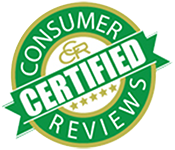
In this VUCA (Volatile, Uncertain, Complex, and Ambiguous) time for companies, how do you ensure that your leaders are being developed and that you are creating a successful strategic plan that enables continuity for the future of your organization?
Most markets are contracting. Most organizations have had to downsize. A majority of leaders are working with very lean teams, are facing work/life imbalances, and are worried about the security and future of their careers.
All these challenges make leadership development an absolute necessity, but also an immense challenge as professional development budgets are significantly reduced and leaders have extremely limited time to invest outside of their focus on business goals and operations.
In multiple surveys a majority of leaders (70%) have voiced that they are feeling under-valued, under-developed, and overextended by the demands of their roles.1 What little leadership development is available is seen as generic and a waste of time.
With that as context, there must be a change if organizations hope to survive. There must be a disciplined commitment to meaningfully developing leaders.
Leadership development that is not relevant, personalized, immersive, and continuous risks the company’s ability to sustain its growth. It risks the performance and retention of talent. What’s critical is evolving and implementing a select number of development strategies that provide proven value for leaders.
1. Individual Development Plans
Make Development an Accountability
Of all leadership development strategies, the one that enables the most value is ensuring the creation and implementation of individual development plans. These cost nothing for the organization and can be highly personalized to enable the engagement of leaders. The key is establishing the cultural components that build a foundation for their success.
The most important of these components is architecting a performance management system that measures the success of leaders in the development of themselves and their direct reports.
In an end of year review, leaders should be evaluated on how well they have performed in these two areas and that evaluation should have an impact upon their performance rating and upon their compensation. This ensures that development becomes an accountability – one that has positive and negative consequences. In turn, this incents leaders to commit time and energy to development. It’s no longer a “nice to do” but a “must do.”
Build Comprehensive and Robust Plans
The next critical component is ensuring that individual developments are comprehensive and robust. Too often companies enable IDPs that have only 3-4 tactics. For example, taking a class, attending a conference, or seeking out a mentor. With such a limited scope of activities, there’s almost no lasting impact from the plan. It becomes a “check the box” process which undermines the whole concept of leadership development.
Include Three Types of Development
To truly ensure the value of an IDP, it needs to encompass three types of development and a minimum of 15-20 tactics. The three types include:
- On-the-Job activities
- Relationship Based Activities
- Educational Activities
Proportionately, the weighting of activities should ensure that 70% are dedicated to On-the-Job Activities, 20% to Relationship Based and 10% to Educational. Since research indicates that the most impactful development comes from experiential activities, a plan should make these the priority. Included in these activities would be stretch assignments, job enlargement, special projects, rotations, job shadowing, new skills practice, etc.
To encompass People Based Activities, a leader should include mentoring, meetings with subject matter experts, partnering with a peer coach, and networking with external experts in the area of their development. They would also include practicing their skills by mentoring and training others in the organization.
For Educational Activities a leader should explore training, books, articles, Ted Talks, Google searches, podcasts, and conferences. Combined these will increase their intellectual understanding of a skill or behavior they are trying to develop. But, again, these tactics should play the smallest role in an IDP.
Make Development a Habit
If a leader hopes to truly create impact from their IDP, they need to make sure that they develop the discipline to make progress against their plan. That means blocking time on their calendar to implement activities, meeting regularly with their manager to update their plan, and making their development “a habit” – just like they would going to the gym.
If in practice, a leader can evolve all of these practices for their IDP, they will enable their development throughout the year and accelerate their leadership exponentially.
2. Leadership Workshops
Interactive Learning for Modern Leaders
To address the preferences of leaders for meaningful and immersive development, a second critical area to explore is instructor led workshops. Development Dimensions International has compelling research that a majority of leaders (71%) prefer learning from an interactive environment with colleagues and an expert facilitator.
The workshops could be delivered in person or virtually, but the clear demand is for discussions, experiential activities, and opportunities to collaborate with other leaders across the organization.
Low-Cost, High-Impact Options
Ideally an organization has an internal leadership development resource that can design and deliver a variety of workshops. If so, there’s very little expense associated with this development strategy. Workshops can be designed with customization and scheduled with frequency and so that they create continuous strategic impact for the company.
If the company does not have its own resources, then they can reach out to companies like Executive Consulting and Coaching and create a comprehensive curriculum with a very lean budget.
If leaders are overly consumed with business goals and operations, then workshops could be provided as “lunch and learns” and be limited to just an hour. They could be scheduled with a regular cadence (e.g., bi-monthly on Thursdays at noon) so that leaders can plan ahead and save the time on their calendars.
Reinforce a Culture of Learning
This combination will almost guarantee that the company can reach a wide array of leaders – as most everyone can spare an hour of their day and especially if the workshops are perceived to be well designed and to provide value.
The key is to provide ongoing development for leaders and to brand the company’s investment in their professional growth and career. During VUCA times, this will help improve upon the engagement, the attraction and the retention of talent.
3. 360⁰ Feedback
Gain a Complete Picture of Leadership Performance
The third key strategy during VUCA times is to provide 360⁰ feedback for leaders. This strategy will enable them to receive well rounded perspectives of their performance from a variety of key stakeholders including their manager, direct reports, peers, and other colleagues. This in turn provides unbiased and honest feedback that enables much more self-awareness and much more focused development.
Almost every leader possesses some “blind spots” and may not see themselves as others see them. In some cases, they may not see where they are using skills too much or too little, and this can undermine the impact of their leadership. To be as high performing as possible leaders need to discover how they are really showing up to their stakeholders. Only then, can they recognize their gaps and adapt their skills, knowledge, and behaviors.
Keep Costs Manageable
360⁰ feedback can be an extremely expensive development strategy if an organization uses external providers such as Korn Ferry, Center for Creative Leadership, etc. However, if a company can develop its own leadership competencies and its own assessment tool and leverage skilled internal talent for delivering feedback, the costs can be very reasonable and the strategy can be easily scaled.
Best Practices for 360⁰ Feedback
The keys to a successful 360⁰ feedback strategy are to establish that:
- The 360⁰ feedback will be used for development only. It will not be considered for promotion, compensation, or succession planning. It will remain confidential for the leader. This ensures that observers will share honest and open feedback.
- The leader selects who among their colleagues should respond to the survey. They may ask their manager for input and approval, but the choices should be primarily those of the leader.
- The leader personally reaches out to observers and asks them to provide their candid observations. They also share that their feedback will be anonymous.
- The 360⁰ report is provided to the leader in a one-to-one meeting by an experienced coach who can partner with them to fully understand the context of the feedback and to develop a comprehensive development plan.
If these practices are implemented, there is a very high probability that the leader will leverage the 360⁰ insights to become a more effective leader.
Creating a Ripple Effect
When a leader improves their effectiveness, it doesn’t just benefit them or their direct reports. Other people throughout the organization benefit, too. As one leader improves, others are motivated to do the same, creating a ripple effect that lasts over time.2
Summary
Combining 360⁰ Tools with Leadership Workshops and Individual Development Plans can make such an immense difference for companies trying to navigate through this very chaotic and stressful business environment. It will signal to leaders that their organization cares about them and is investing in their professional growth and development. More importantly it will enable the company to create and sustain the organizational capability it needs to weather these tumultuous times when so many are feeling very anxious and uncertain about their future.
1 Development Dimensions International
2 Zenger and Folkman – December 2020


